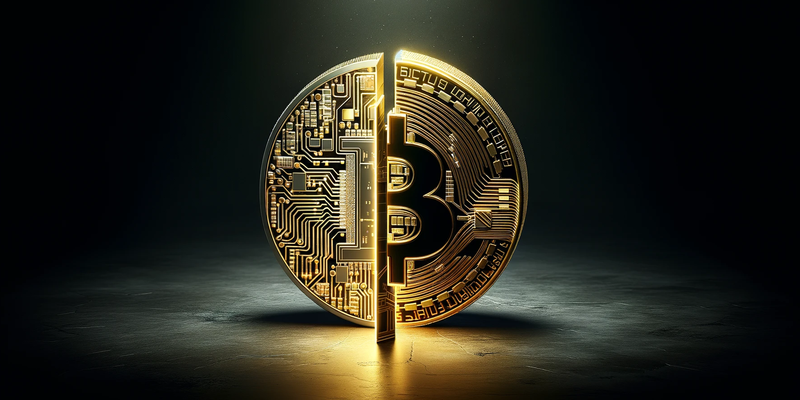What is Bitcoin Halving? Will it decrease the Price of Bitcoins Significantly?
Bitcoin halving, a term that echoes through the corridors of the cryptocurrency market, stands as a fundamental event in the life cycle of Bitcoin. It is an inherent part of the Bitcoin protocol designed to create a controlled supply of this digital gold.
Buckle up buttercup, because we're about to take a deep dive into the fascinating world of Bitcoin halving! This event has been a hot topic in the crypto sphere, leaving many wondering if it's a bull or a bear in disguise for the price of Bitcoin.
Understanding Bitcoin Halving: The Technical Definition
The Bitcoin network issues new bitcoins every time a block of transactions is added to the blockchain, approximately every ten minutes. Initially, the reward for mining a block was 50 bitcoins. However, Bitcoin's protocol dictates that this reward is halved approximately every four years. Thus, the block reward is reduced by 50%, hence the term "halving."
Think of it Like This: Imagine you're collecting limited-edition Pokemon cards. There are only 21 million of these special cards in existence (just like there are only 21 million Bitcoins ever to be created). Every time you complete a chore, you get two new cards as a reward. But then, one day, your parents announce they're only giving you one card per chore! That's kind of like a Bitcoin halving – there are fewer new Bitcoins being created, making the existing ones potentially more valuable.
Purpose of Bitcoin Halving
The primary purpose behind the Bitcoin halving is to control inflation. Unlike traditional fiat currencies, where central banks can print money at will, Bitcoin has a capped supply of 21 million coins. Halving reduces the rate at which new bitcoins are generated, making them scarcer as we approach the total supply cap. This enforced scarcity is a key driver of value, akin to precious metals like gold.
Bitcoin’s genesis block was mined in 2009, with the first halving occurring in 2012, and subsequent events in 2016 and 2020. It is estimated that the final bitcoins will be mined around the year 2140, at which point all bitcoins will be in circulation, concluding the halving events.
Impact on Bitcoin's Price
Historically, Bitcoin has experienced significant price increases following halving events, attributed to the decreased supply of new bitcoins entering the market. This scarcity can increase demand, potentially driving up the price. For instance, post the 2020 halving, Bitcoin saw an exponential rise in value, reaching unprecedented heights.
Potential Risks and Market Anticipation
However, it's not all sunshine in the Bitcoin universe. There's a contrarian belief that Bitcoin prices may have peaked before the halving due to significant investments, such as those from ETFs, potentially overshadowing the halving's impact. Moreover, sophisticated traders might have already priced in the effects of upcoming halvings, diluting the dramatic price changes seen in earlier cycles.
As we navigate through the complex yet fascinating world of Bitcoin, the halving stands out as a critical process, ensuring the longevity and value of this pioneering cryptocurrency. While the halving slices through the supply, creating a savory scarcity, investors should season their strategies with a pinch of caution, considering potential market anticipations and broader economic factors.
Navigating the Bitcoin wave requires a balanced blend of understanding, caution, and a zest for technological adventure. Stay tuned, and keep your investment appetites ready for whatever the Bitcoin kitchen cooks up next!
Edited by Rahul Bansal











![[App Friday] Finch’s gamification of self-care is a hit and a miss](https://images.yourstory.com/cs/2/f49f80307d7911eaa66f3b309d9a28f5/Finch-1655391957378.png)